Abstract
A simplified method for speciation of group D streptococci is described. A total of 4,156 streptococcal isolates from human clinical material was tested for ability to hydrolyze esculin in the presence of 40% bile, ferment pyruvate, hydrolyze arginine, and grow in media containing 40% bile or 6.5% NaCl. Streptococci which hydrolyzed esculin in 40% bile, but which did not hydrolyze arginine, were also tested for their ability to ferment raffinose or sorbose. Sixty percent (2,503) of the isolates hydrolyzed esculin in the presence of 40% bile and were thus presumptively identified as group D. By application of the other criteria, 84% of these were speciated as Streptococcus faecalis, 7% were speciated as S. faecium, 6% were speciated as S. bovis, 2% were speciated as S. avium, and 1% were not identified. This scheme was shown to be both reliable and practical for use in the diagnostic laboratory. S. avium and S. bovis isolates were characterized, and 18 S. bovis isolates from patients with bacterial endocarditis were compared physiologically with 151 isolates of this species from other sources.
Full text
PDF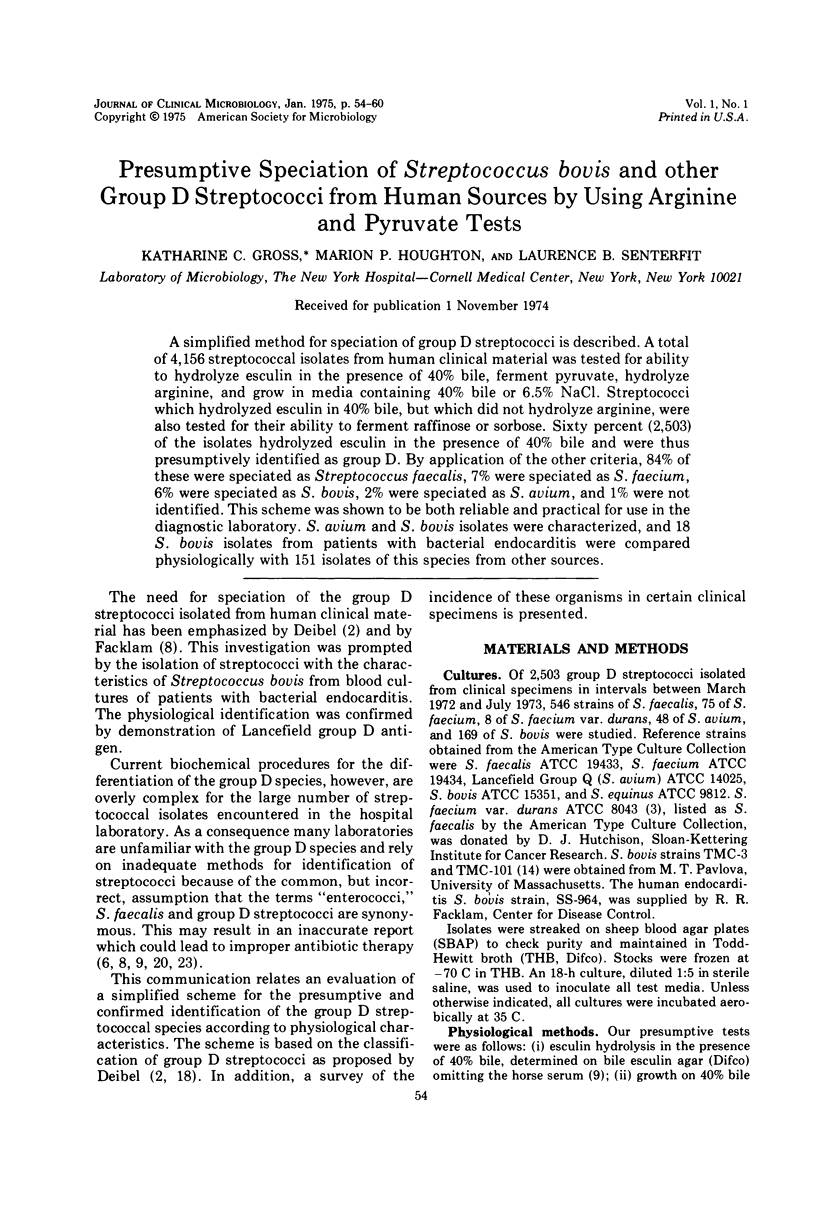
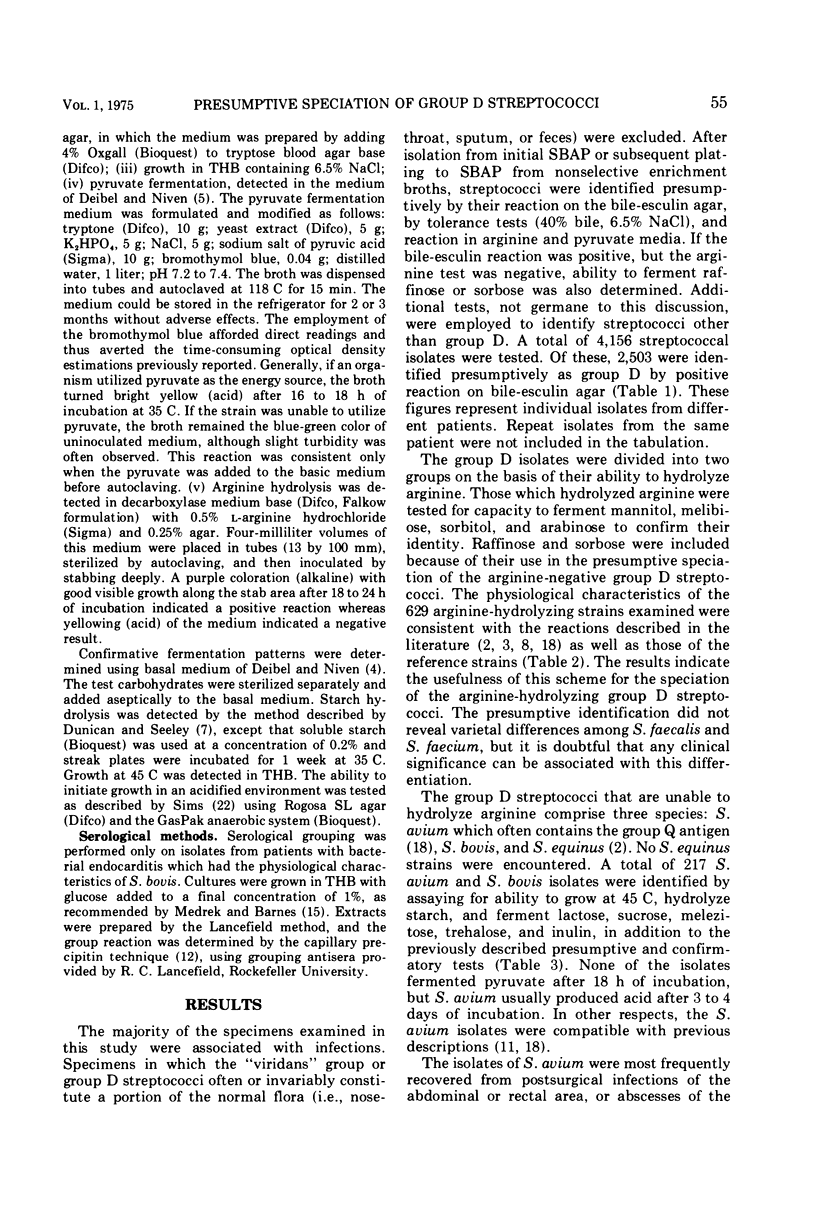
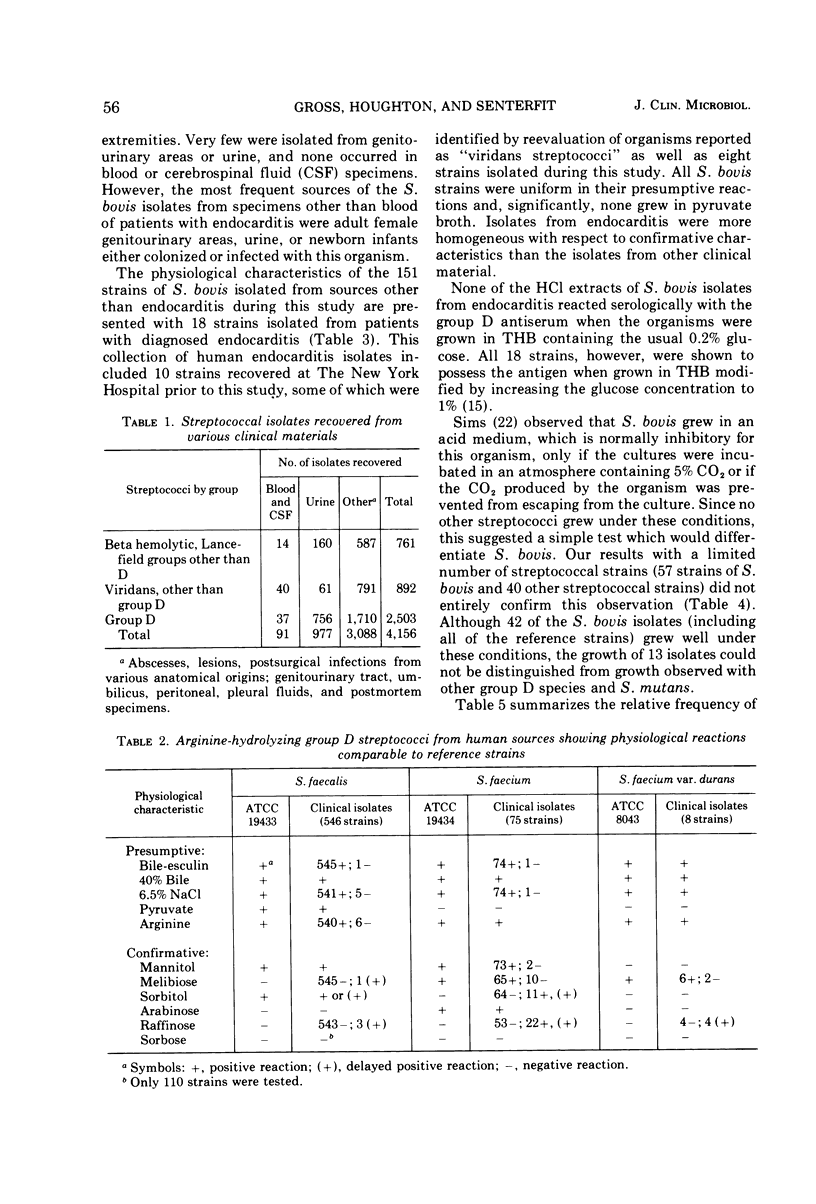
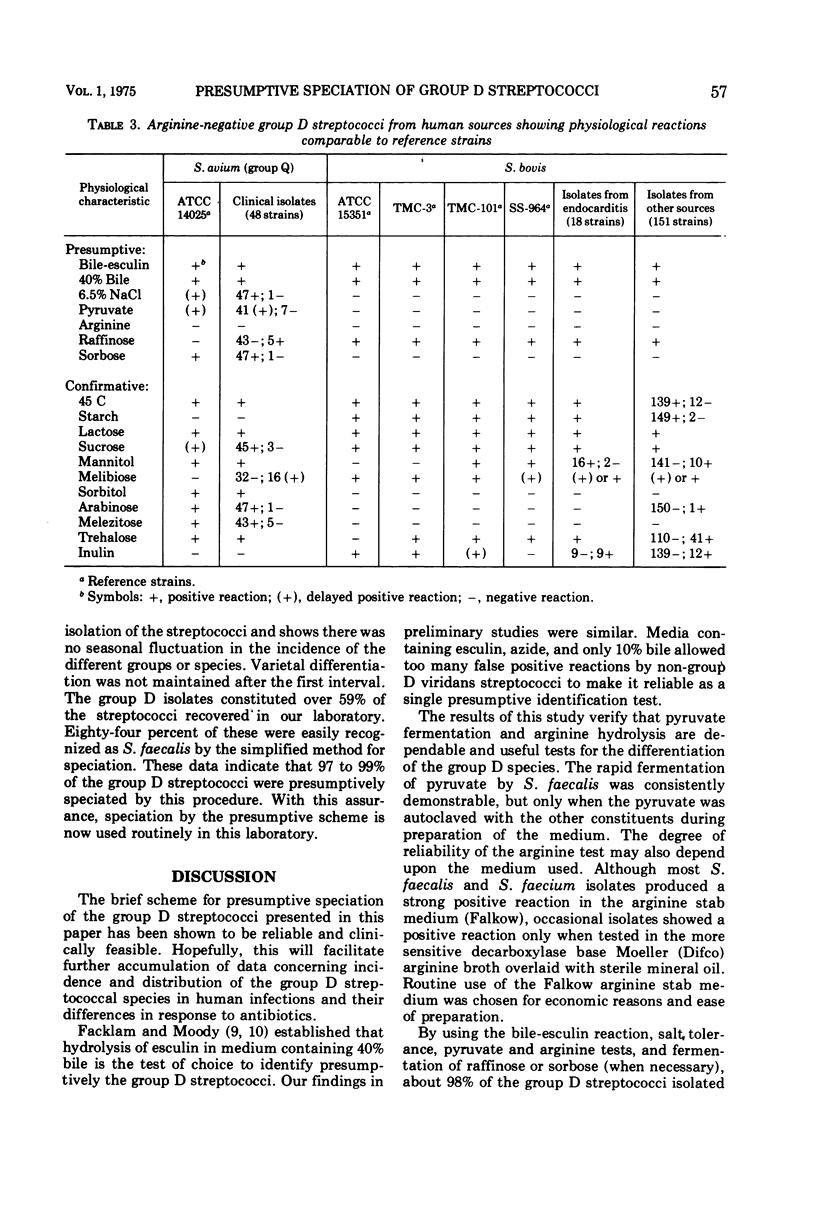
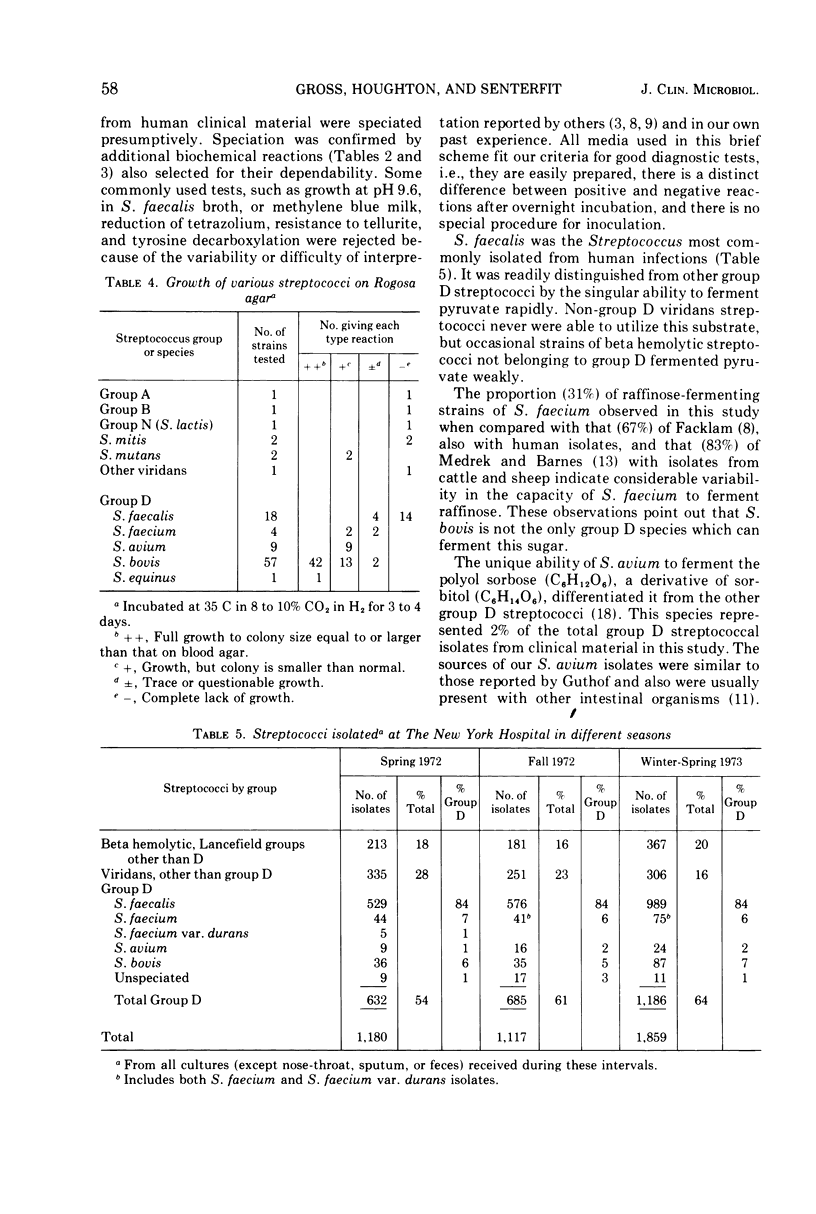
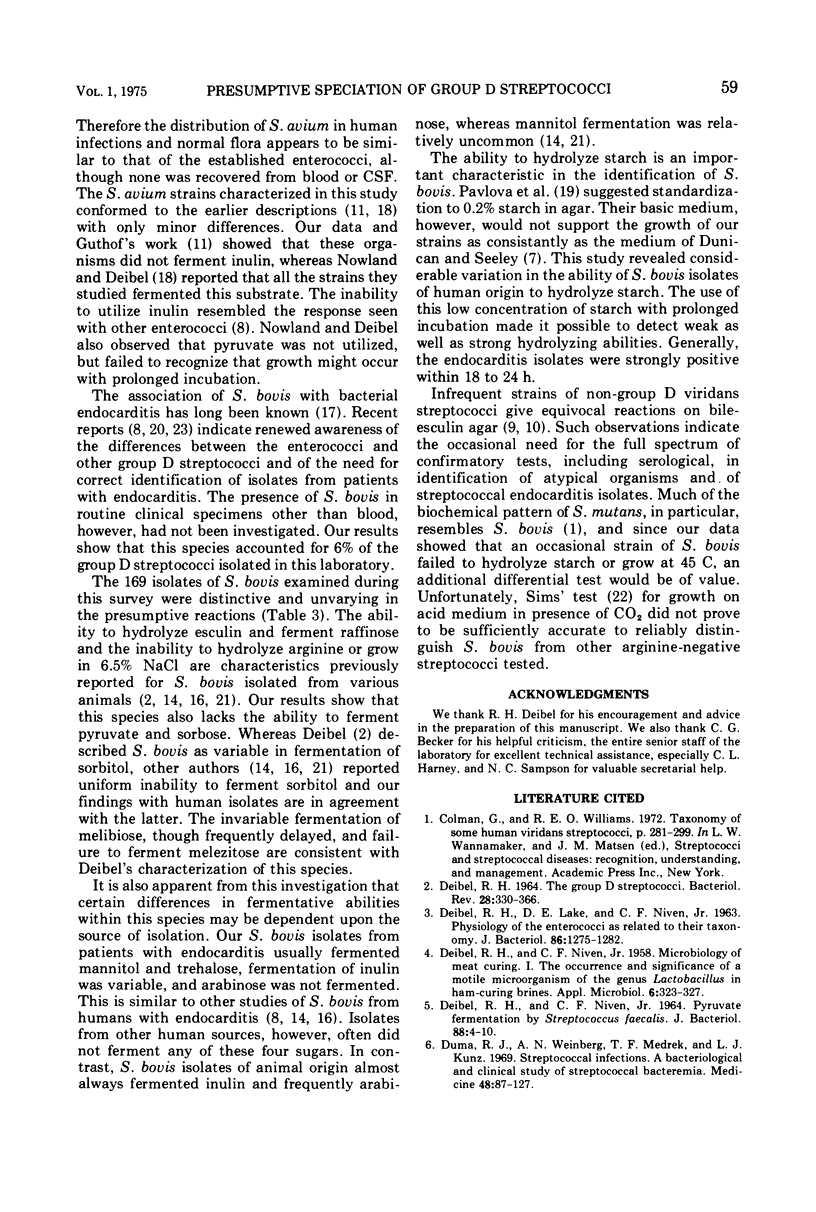
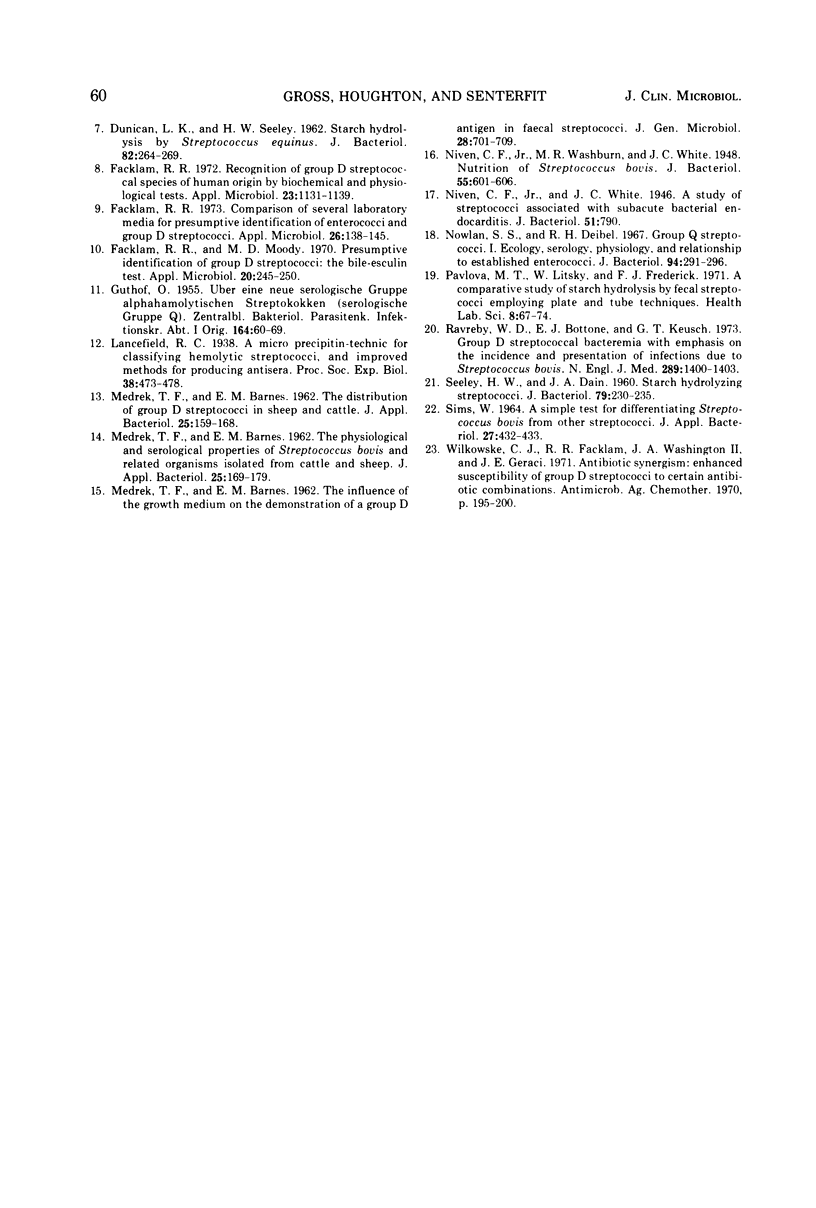
Selected References
These references are in PubMed. This may not be the complete list of references from this article.
- DEIBEL R. H., LAKE D. E., NIVEN C. F., Jr PHYSIOLOGY OF THE ENTEROCOCCI AS RELATED TO THEIR TAXONOMY. J Bacteriol. 1963 Dec;86:1275–1282. doi: 10.1128/jb.86.6.1275-1282.1963. [DOI] [PMC free article] [PubMed] [Google Scholar]
- DEIBEL R. H., NIVEN C. F., Jr Microbiology of meat curing. I. The occurrence and significance of a motile microorganism of the genus Lactobacillus in ham curing brines. Appl Microbiol. 1958 Sep;6(5):323–327. doi: 10.1128/am.6.5.323-327.1958. [DOI] [PMC free article] [PubMed] [Google Scholar]
- DEIBEL R. H., NIVEN C. F., Jr PYRUVATE FERMENTATION BY STREPTOCOCCUS FAECALIS. J Bacteriol. 1964 Jul;88:4–10. doi: 10.1128/jb.88.1.4-10.1964. [DOI] [PMC free article] [PubMed] [Google Scholar]
- DEIBEL R. H. THE GROUP D STREPTOCOCCI. Bacteriol Rev. 1964 Sep;28:330–366. doi: 10.1128/br.28.3.330-366.1964. [DOI] [PMC free article] [PubMed] [Google Scholar]
- DUNICAN L. K., SEELEY H. W. Starch hydrolysis by Strepto-coccus equinus. J Bacteriol. 1962 Feb;83:264–269. doi: 10.1128/jb.83.2.264-269.1962. [DOI] [PMC free article] [PubMed] [Google Scholar]
- Facklam R. R. Comparison of several laboratory media for presumptive identification of enterococci and group D streptococci. Appl Microbiol. 1973 Aug;26(2):138–145. doi: 10.1128/am.26.2.138-145.1973. [DOI] [PMC free article] [PubMed] [Google Scholar]
- Facklam R. R., Moody M. D. Presumptive identification of group D streptococci: the bile-esculin test. Appl Microbiol. 1970 Aug;20(2):245–250. doi: 10.1128/am.20.2.245-250.1970. [DOI] [PMC free article] [PubMed] [Google Scholar]
- Facklam R. R. Recognition of group D streptococcal species of human origin by biochemical and physiological tests. Appl Microbiol. 1972 Jun;23(6):1131–1139. doi: 10.1128/am.23.6.1131-1139.1972. [DOI] [PMC free article] [PubMed] [Google Scholar]
- GUTHOF O. Uber eine neue serologische Gruppe alphahämolytischer Streptokokken (Serologische Gruppe Q). Zentralbl Bakteriol Orig. 1955 Nov;164(1-5):60–63. [PubMed] [Google Scholar]
- MEDREK T. F., BARNES E. M. The influence of the growth medium on the demonstration of a group D antigen in faecal streptococci. J Gen Microbiol. 1962 Sep;28:701–709. doi: 10.1099/00221287-28-4-701. [DOI] [PubMed] [Google Scholar]
- Niven C. F., Jr, Washburn M. R., White J. C. Nutrition of Streptococcus bovis. J Bacteriol. 1948 May;55(5):601–606. doi: 10.1128/jb.55.5.601-606.1948. [DOI] [PMC free article] [PubMed] [Google Scholar]
- Niven C. F., Jr, White J. C. A Study of Streptococci Associated with Subacute Bacterial Endocarditis. J Bacteriol. 1946 Jun;51(6):790–790. doi: 10.1128/jb.51.6.790-790.1946. [DOI] [PMC free article] [PubMed] [Google Scholar]
- Nowlan S. S., Deibel R. H. Group Q streptococci. I. Ecology, serology, physiology, and relationship to established enterococci. J Bacteriol. 1967 Aug;94(2):291–296. doi: 10.1128/jb.94.2.291-296.1967. [DOI] [PMC free article] [PubMed] [Google Scholar]
- Pavlova M. T., Litsky W., Francis F. J. A comparative study of starch hydrolysis by fecal streptococci employing plate and tube techniques. Health Lab Sci. 1971 Apr;8(2):67–74. [PubMed] [Google Scholar]
- Ravreby W. D., Bottone E. J., Keusch G. T. Group D streptococcal bacteremia, with emphasis on the incidence and presentation of infectious due to Streptococcus bovis. N Engl J Med. 1973 Dec 27;289(26):1400–1403. doi: 10.1056/NEJM197312272892605. [DOI] [PubMed] [Google Scholar]
- SEELEY H. W., DAIN J. A. Starch hydrolyzing streptococci. J Bacteriol. 1960 Feb;79:230–235. doi: 10.1128/jb.79.2.230-235.1960. [DOI] [PMC free article] [PubMed] [Google Scholar]
- Wilkowske C. J., Facklam R. R., Washington J. A., 2nd, Geraci J. E. Antibiotics synergism: enhanced susceptibility of group D streptococci to certain antibiotic combinations. Antimicrob Agents Chemother (Bethesda) 1970;10:195–200. [PubMed] [Google Scholar]


